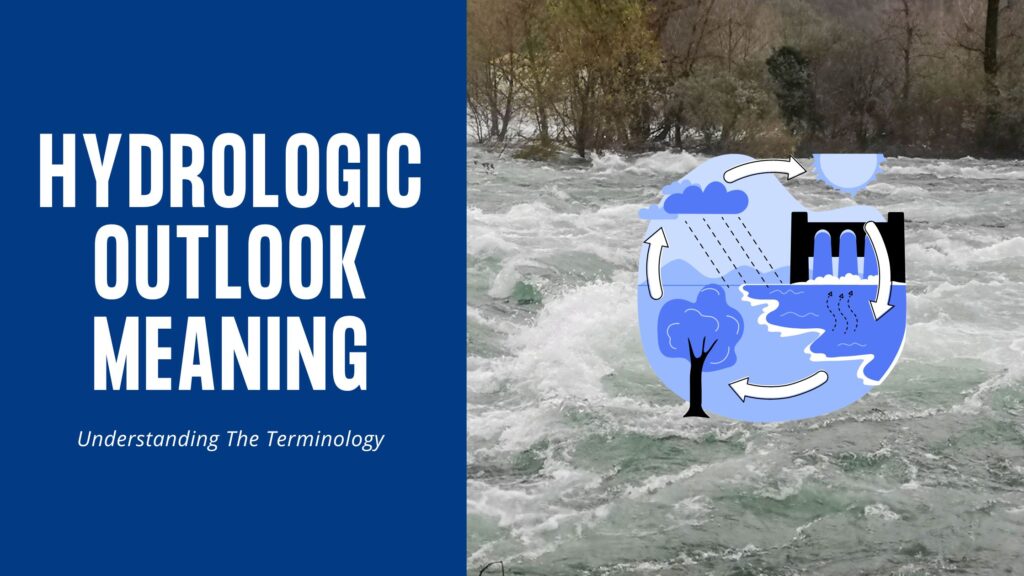What is a Hydrologic Outlook?
Introduction
A hydrologic outlook is an essential tool used by meteorological agencies to communicate potential water-related hazards, such as flooding, drought, or changes in water levels. These outlooks provide critical information that helps communities prepare for and respond to hydrologic events. Understanding what a hydrologic outlook entails, how it is created, and its implications can significantly impact public safety and resource management. This article will explore the definition, purpose, components, and applications of hydrologic outlooks, along with a comprehensive FAQ section.
Definition of Hydrologic Outlook
A hydrologic outlook is a forecast issued by meteorological authorities, such as the National Weather Service (NWS) in the United States, that provides information about expected hydrologic conditions over a specified period. It assesses the potential for flooding, drought, or other water-related events based on current and forecasted weather conditions, soil moisture, snowpack, and other relevant factors.Hydrologic outlooks are typically issued for a timeframe beyond 48 hours, allowing communities and emergency management officials to prepare for potential impacts. The outlook serves as an early warning system, alerting the public to the possibility of hazardous conditions related to water.
Purpose of Hydrologic Outlook
The primary purpose of a hydrologic outlook is to inform the public, emergency management officials, and other stakeholders about potential hydrologic events. By providing timely information, hydrologic outlooks help in:
- Raising Awareness: They alert communities to the possibility of flooding or drought, encouraging residents to stay informed and take necessary precautions.
- Promoting Preparedness: Hydrologic outlooks allow individuals and organizations to prepare for potential impacts, such as securing properties, planning evacuations, or adjusting water usage.
- Guiding Resource Management: Water resource managers can use hydrologic outlooks to make informed decisions regarding water allocation, conservation, and flood control measures.
Components of a Hydrologic Outlook
Hydrologic outlooks are generated using various data sources and analytical methods. Here are the key components that contribute to a hydrologic outlook:
1. Data Collection
Meteorological agencies gather data from multiple sources, including:
- Weather Stations: Ground-based weather stations provide real-time data on temperature, precipitation, humidity, and wind speed.
- Satellite Imagery: Satellites offer valuable information on cloud cover, precipitation patterns, and snowpack levels.
- Radar Systems: Doppler radar systems track precipitation intensity and movement, helping to predict short-term weather events.
- Stream Gauges: These devices measure water levels in rivers and streams, providing insight into current hydrologic conditions.
2. Forecasting Models
Meteorologists use advanced forecasting models to analyze the collected data and predict future hydrologic conditions. These models take into account various factors, such as:
- Precipitation Forecasts: Expected rainfall amounts and distribution over time.
- Snowpack Analysis: The amount of snow accumulated in mountainous regions and its potential for melting.
- Soil Moisture Levels: The amount of moisture present in the soil, which affects runoff and flooding potential.
3. Confidence Levels
Hydrologic outlooks are issued based on a confidence level that indicates the likelihood of a hydrologic event occurring. This confidence level is determined by analyzing the data and forecasting models.
- High Confidence: A strong likelihood of a hydrologic event occurring, prompting immediate attention.
- Medium Confidence: A moderate likelihood of an event, warranting monitoring and preparation.
- Low Confidence: A lower likelihood of an event, though it should still be noted for awareness.
4. Timeframe
Hydrologic outlooks typically cover a timeframe of several days to weeks, depending on the nature of the event being forecasted. This allows for early warning and preparation, especially for events like flooding or drought.
Types of Hydrologic Outlooks
Hydrologic outlooks can vary based on the specific conditions being assessed. Here are some common types:
1. Flood Outlooks
Flood outlooks provide information about the potential for flooding in specific areas. They may include details on expected rainfall amounts, river levels, and the likelihood of flash flooding.
2. Drought Outlooks
Drought outlooks assess the potential for dry conditions and water shortages. They consider factors such as precipitation forecasts, soil moisture levels, and historical climate data.
3. Ice Jam Outlooks
Ice jam outlooks are issued during winter months when ice buildup in rivers can lead to flooding. These outlooks provide information on the potential for ice jams and their impact on water levels.
4. Seasonal Hydrologic Outlooks
Seasonal hydrologic outlooks provide long-term forecasts for hydrologic conditions, such as expected precipitation and temperature trends over a season. These outlooks are useful for water resource planning and management.
The Importance of Hydrologic Outlooks
Hydrologic outlooks play a crucial role in risk management and public safety. By providing timely and accurate information about potential water-related hazards, these outlooks help communities prepare for and respond to hydrologic events. Here are some key reasons why hydrologic outlooks are important:
1. Enhancing Public Safety
Hydrologic outlooks inform the public about potential flooding or drought conditions, allowing individuals to take necessary precautions. This can include securing properties, avoiding travel in hazardous areas, or making arrangements for water conservation.
2. Supporting Emergency Management
Emergency management officials rely on hydrologic outlooks to plan and coordinate responses to potential water-related disasters. This includes deploying resources, issuing evacuation orders, and communicating with the public.
3. Informing Water Resource Management
Water resource managers use hydrologic outlooks to make informed decisions about water allocation, conservation, and infrastructure maintenance. This helps ensure that communities have access to adequate water supplies and can mitigate the impacts of drought or flooding.
4. Promoting Community Awareness
Hydrologic outlooks raise awareness about the importance of water management and the potential impacts of hydrologic events. By keeping the public informed, communities can work together to prepare for and respond to water-related challenges.
FAQ Section
Q: What is a hydrologic outlook?
A: A hydrologic outlook is a forecast issued by meteorological authorities that provides information about expected hydrologic conditions, such as flooding or drought, over a specified period.
Q: Who issues hydrologic outlooks?
A: Hydrologic outlooks are typically issued by the National Weather Service (NWS) and other meteorological agencies.
Q: What factors are considered in a hydrologic outlook?
A: Factors include current and forecasted precipitation, snowpack, soil moisture, streamflow, reservoir levels, and other relevant hydrological data.
Q: How often are hydrologic outlooks issued?
A: Hydrologic outlooks are generally issued on a weekly basis, but special outlooks may be issued during significant weather events.
Q: How can I access hydrologic outlooks?
A: Hydrologic outlooks are available on the NWS website and can also be accessed through local news outlets and weather apps.
Q: What is the difference between a hydrologic outlook and a flood warning?
A: A hydrologic outlook indicates a potential for flooding and is issued with lower confidence, while a flood warning conveys a high degree of confidence that flooding is imminent or occurring.
Q: How can I prepare for potential flooding based on a hydrologic outlook?
A: Stay informed by monitoring local weather updates, secure your property, create an emergency plan, and have supplies ready in case of evacuation.
Q: What should I do if I receive a hydrologic outlook?
A: Take the information seriously, stay updated on the situation, and follow any recommendations from local authorities regarding preparation and safety.
Conclusion
Hydrologic outlooks are vital tools for predicting and managing water-related hazards. By providing timely and accurate information about potential flooding, drought, and other hydrologic events, these outlooks help communities prepare for and respond to challenges associated with water management. Understanding the components and significance of hydrologic outlooks is essential for individuals, emergency managers, and water resource planners alike.For more information on hydrologic outlooks and their importance, you can refer to the Wikipedia page on Hydrology.
| Aspect | Description |
|---|---|
| Definition | A forecast of expected hydrologic conditions, including flooding and drought |
| Issuing Authority | National Weather Service (NWS) and other meteorological agencies |
| Key Factors | Precipitation, snowpack, soil moisture, streamflow, reservoir levels |
| Frequency | Weekly, with special outlooks during significant weather events |
| Types of Outlooks | Flood outlooks, drought outlooks, ice jam outlooks, seasonal outlooks |
| Importance | Enhances public safety, supports emergency management, informs water resource management |
By understanding hydrologic outlooks and their implications, individuals and communities can better prepare for and mitigate the impacts of water-related hazards.



